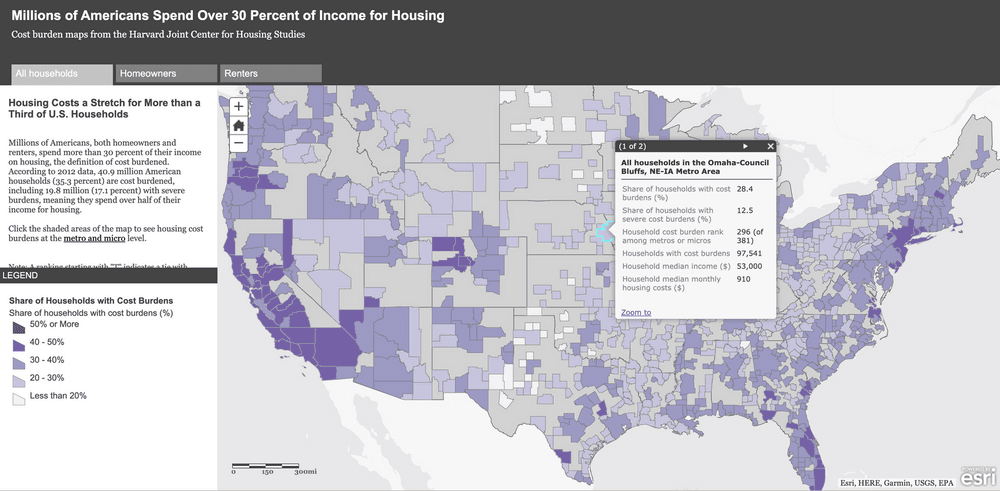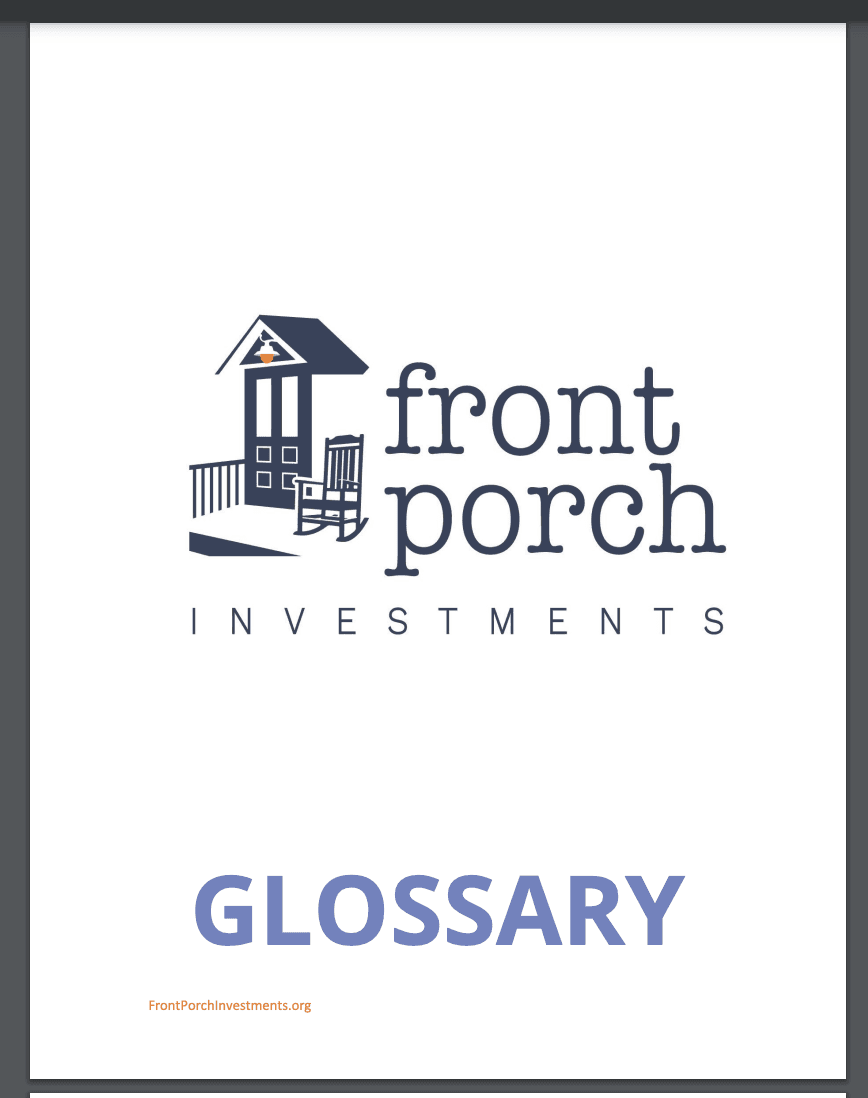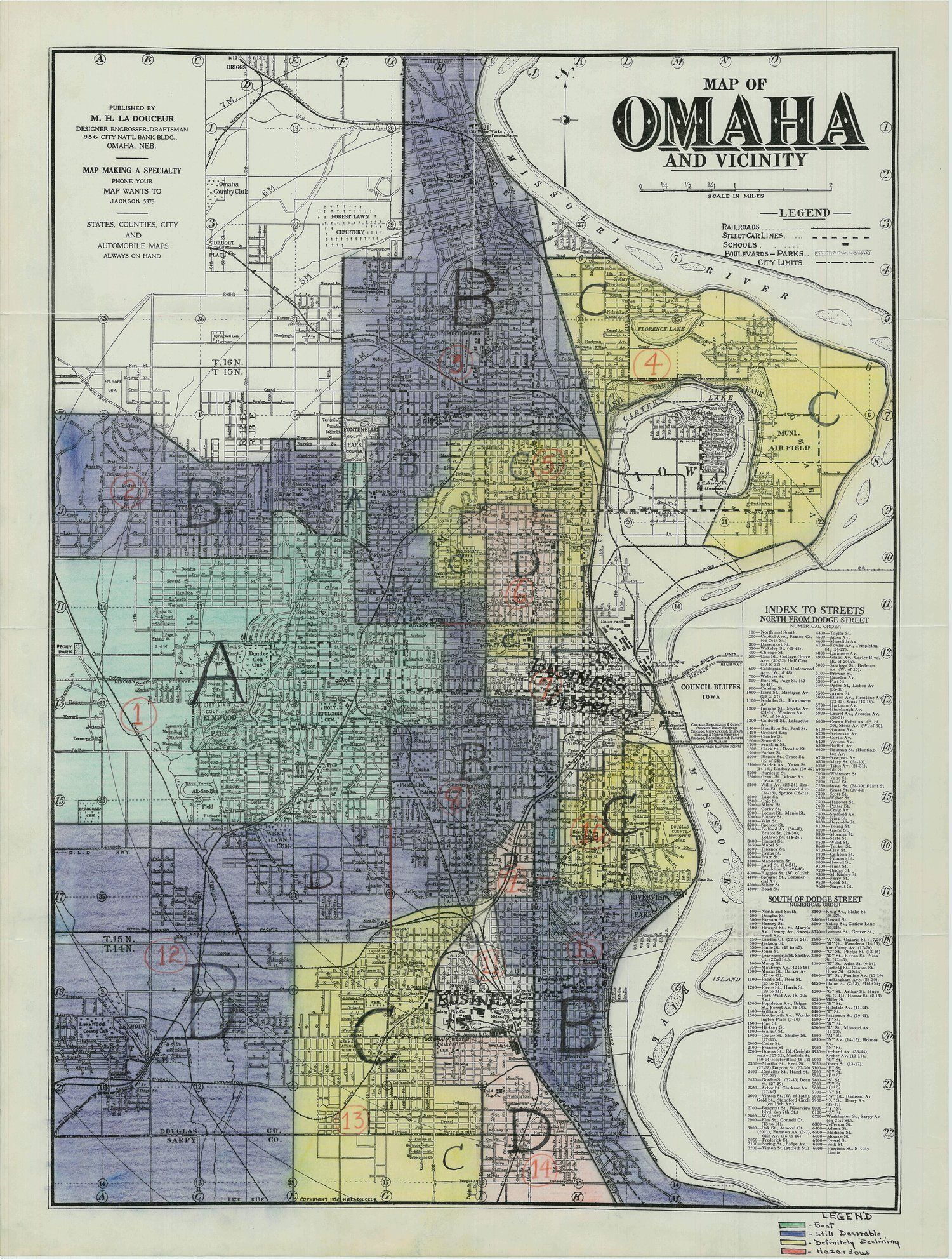Affordable Housing, a definition
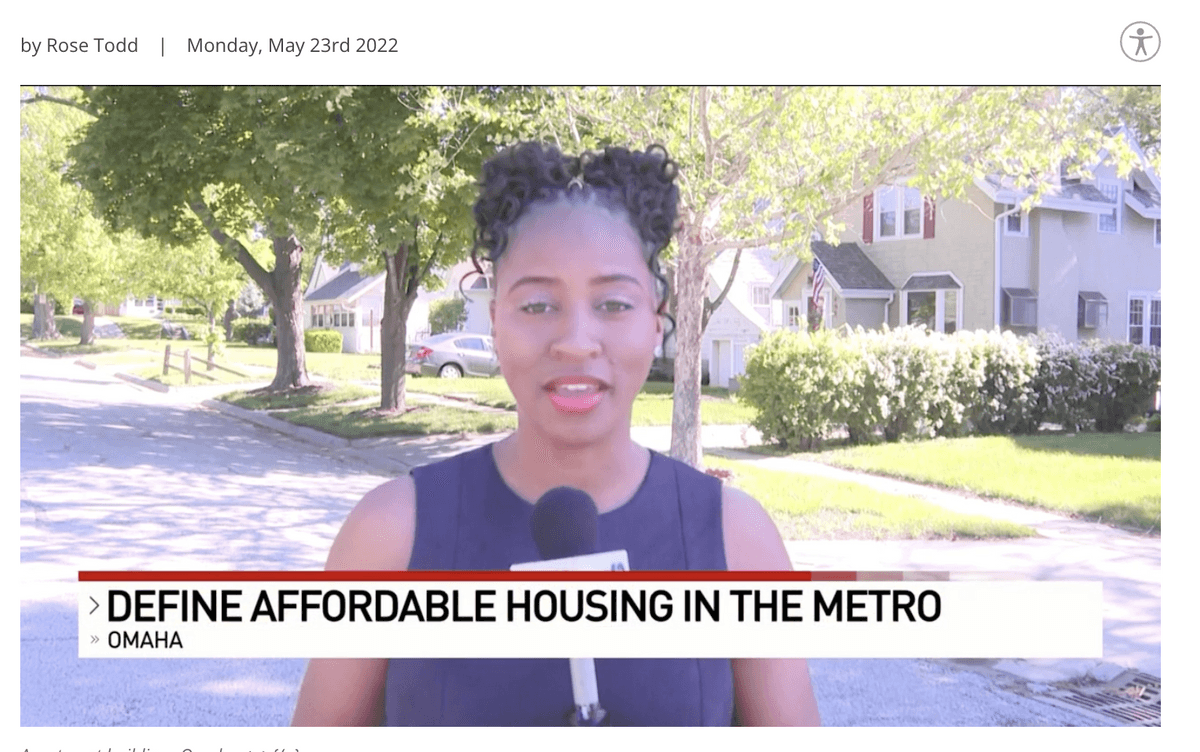
“Soon the definition won’t be determined by “who you ask,” but whether it is affordable to a certain income level.” -Eric Englund, City of Omaha (Fox42 News Story)
The baseline definition of affordable housing is provided by the United States Department of Housing and Urban Development (HUD):
Affordable housing is defined as housing on which the occupant is paying no more than 30 percent of gross income for housing costs, including utilities. Reference: www.hud.gov.
Families around the United States are considered housing cost-burdened when they spend more than 30% of their incomes on rent and utilities, the reality for 45% of renters and 19% of homeowners in the Omaha and Council Bluffs area. Families are considered severely cost-burdened when they spend more than half of their incomes on housing, the reality for another approximately 15 percent of households in the Omaha and Council Bluffs area (21,500 households). Both are a strong risk factor for housing instability. An estimated 20,000 children (three times the capacity of the Baxter Arena) live in these households.
Affordable housing, when using the definition above, means that we all need and require affordability to not pay more than 30% of our household’s income on housing (rent or mortgage) and related expenses like utilities. Households required to pay more than 30% (regardless of your level of income) are considered “cost-burdened” and therefore may have difficulty or a challenge paying for and affording other necessities such as transportation, food, clothing, and medical care.
But where did the 30% come from?
The 30-percent rule for measuring affordability can be traced back to The Brooke Amendment, passed in 1969 by Senator Edward Brooke, the country's first popularly elected African American senator and a vocal advocate of affordable housing. He and then-Senator Walter Mondale coauthored the 1968 Fair Housing Act, which prohibits housing discrimination based on race.
The Brooke Amendment was a response to rent increases and complaints about services in public housing, and effectively capped public housing rent at 25 percent of a resident’s income. Representative Barney Frank recounted that “[the amendment] said originally that the poorest of the poor who get housing through various public programs shouldn’t be expected to pay more than 25 percent of their income for housing, precisely because they have so little.” Congress raised the cap to 30 percent in 1981.
Source: https://www.huduser.gov/portal/pdredge/pdr_edge_featd_article_092214.html
This origin is likely why when we think of affordable housing, many thoughts navigate towards low income, or the variety of housing programs that exist for households that require some support. As they should. Frank Nothaft, the late chief economist at Freddie Mac, notes, “If your income is $500,000 a year, you can pay 40 percent and still have money left. But if your income is $20,000 a year, it will be hard to make ends meet if you’re paying 30 percent of your income on rent.”
So, how does eligibility work? Area Median Income (or “AMI”) is a term often used when defining eligibility for affordable housing programs. HUD uses income ranges in more specific terms, namely, to identify Median Family Income (MFI), which are larger geographical areas used to calculate income medians, or to identify more specific income limits for subsidies and housing programs, such as Public Housing, Section 8 vouchers (housing choice), Section 202 (for the elderly and aging), and Section 811 (for persons with disabilities). The median in MFI divides the income distribution across the geographical area into two equal parts: one-half of the cases falling below the median income and one-half above the median. For households and families, the median income is based on the distribution of the total number of households and families including those with no income.
Income limits qualify AMI data to adjust for family size. HUD provides an updated table of those AMI percentages and family sizes (1 person up to 8 persons) based on County income data.
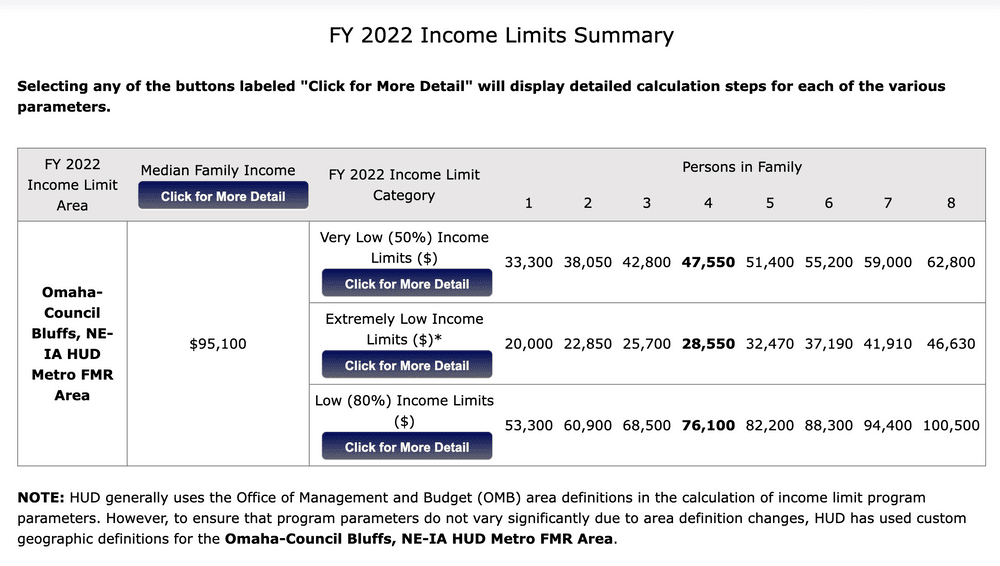
Source: https://www.huduser.gov/portal/datasets/il/il2022/2022summary.odn
To learn more about the calculations and exceptions, including adjustments for housing costs, and low-income areas vs. high-income areas, HUD provides this document (with additional attachments for even more exceptions) .
What we believe
The 30% rule, and the blunt tools of AMI and MFI created by the federal government should not be seen as an exhaustive way to understand affordable housing. The time has come for local communities to work together to add more dimension to this definition. We believe that affordable housing should also be high quality, available (having adequate stock across the community), and be located conveniently to work, grocery stores, public transportation, and recreation. Housing that is affordable should also have proximity to playgrounds, walking trails and shared community spaces. We also believe that affordable housing should be physically accessible to those living with disabilities and who identify as disabled, as well as housing that has high visitability features to strengthen neighborhoods and community fabric.
We believe that affordable housing matters to the Greater Omaha Metro because having a place to call home can improve the quality of life for any person – whether they are renting or owning a home. Everyone deserves to have safe, quality housing available to them, that they can afford.
And beyond our belief that everyone deserves a safe, affordable place to live for themselves, we believe that truly affordable housing offers additional benefits across the community and that it is important to understand its shared value. For example, cities are drivers for economic growth and development, and we know there is an extremely strong connection between housing security and economic growth.
Beyond the impact on economic growth, housing advocates are shining a light on other societal benefits of affordable housing, such as health equity and the reduction of disparities.
Affordable housing is an investment in our health. A difficult housing situation—frequent moves, struggling to pay rent, an eviction or foreclosure, poor conditions—can cause physical and mental health issues, or make existing conditions worse. Unstable housing can also amplify individuals’ vulnerability to domestic violence and other physical safety issues.
Physical health impacts of housing area especially pronounced for children, who are in a critical stage of their physical, emotional, and intellectual development. Children who experience housing instability or homelessness have a 25% greater risk of poor health in adulthood. Stable housing, however, can reduce healthcare costs and improve lifelong health for children and adults. Research consistently documents the impacts of housing instability on our health. This research shows direct links between housing instability and childhood nutrition, healthy development, and asthma. For example, children living in poor-quality housing make 60 percent more visits to the emergency room due to asthma. Also, a child living with housing insecurity is almost 30 percent more likely to be underweight, and 20 percent more likely to have poor nutrition. We note many projects taking shape to address this, through partnerships between housing and health providers, and our team is encouraged to see innovative and necessary solutions rising to the forefront in other parts of the country and hope to see similar projects in the Greater Omaha Metro soon.
When individuals and families have access to safe, quality, and affordable housing, their correlating health risks decrease. One economic benefit of a focus on safe affordable housing is when households are not required to pay more than 30% of their income on rent or mortgage, and utilities. By reducing this housing cost burden, households can instead prioritize access and financial resources for health care, foods that are healthy for their individual needs, and transportation to/from physical and mental health care.
Affordability in housing is a complex and nuanced, but extremely important topic. The Front Porch Investments team envisions a community committed to ensuring all have a home where they can thrive, with bold decisions and effective innovation supporting housing as a human right. We are building on the exemplary housing developments, organizations, and individuals tasked with these challenges in the past, harnessing today’s momentum and incredible talent, to create a more robust, holistic, and lasting approach.

